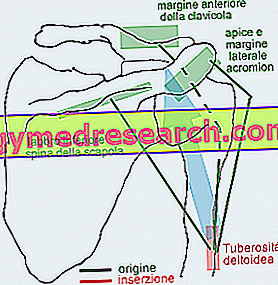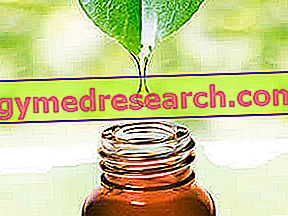Generality
Dried dandruff is a type of dandruff characterized by the presence of small gray-white dry scales.

Dry dandruff - also called pityriasis simplex capitis or pityriasis sicca - although it is not considered a serious disorder, it is undoubtedly an annoying condition that can make those who suffer particularly uncomfortable during social activities.
However, in milder cases, dry dandruff is a condition that can be controlled by the use of special cosmetic or dermocosmetic products. In the most severe cases, however, it may be necessary to resort to the use of real drugs.
What is that?
What is Dry Dandruff?
Dry dandruff is a disorder of the scalp in which the latter is covered with fine, easily detachable white flakes.
Dry dandruff generally occurs in adulthood and appears to affect male individuals more frequently.
Usually, it is a mild disorder that can be controlled relatively easily; sometimes, however, the disorder can be severe and therefore requires the intervention of the dermatologist.
Please note
Dry dandruff should not be confused with fat dandruff, characterized, instead, by the presence of thick scales covered with sebum.
Similarly, dry dandruff should not be confused with scalp psoriasis, an inflammatory disease that causes plaque lesions that can give rise to a desquamation similar to that which occurs in dry dandruff.
Features
What are the characteristics of dry dandruff?
Dry dandruff occurs in the form of small and fine greyish-white flakes that can remain on the hair or - as more frequently happens - can fall on the clothes, giving rise to the so-called "snow effect".

The small scales that make up dry dandruff are none other than residues of desquamated dead cells belonging to the stratum corneum. The desquamation of the superficial cells of the stratum corneum is part of the normal physiological process of cell turnover, however, when its speed increases exponentially, we see the onset of the disorder.
Fortunately, unlike what happens in fat dandruff, normally dry dandruff is not associated with inflammation of the scalp and its presence does not increase the risk of hair loss. However, this disorder is very often associated with very intense itching .
Finally, remember that the manifestation of dry dandruff tends to worsen during the winter period, while it improves during the summer months.
Causes
What are the Causes and Risk Factors of Dry Dandruff?
Although the exact causes that lead to the formation of dry dandruff are not yet completely clear, it is believed that the main culprit is to be sought in the increase of the speed of cell turnover . Increase which, in turn, may be caused and / or exacerbated by the uncontrolled growth of Malassezia furfur (or Pityrosporum ovale ). This microorganism is a yeast that lives on the scalp of most people but, under certain circumstances, can act as an opportunistic pathogen . Malassezia furfur feeds on the substances contained within the sebaceous secretions of the scalp; when the situation permits, this yeast begins to replicate itself in an excessive and uncontrolled way, favoring the scaling of the scalp with an acceleration of cell turnover.
Among the other factors that can favor, exacerbate or contribute to the formation of dry dandruff we find:
- Dry skin, this condition can favor the formation of this type of dandruff because a dry and dehydrated skin flakes more easily;
- Situations of high stress ;
- Use of shampoos and hair products of poor quality, too aggressive and / or unsuitable for your skin type;
- Use of alcohol-based products or lotions (in fact, alcohol dehydrates the scalp favoring peeling);
- Lowering of immune defenses (this condition can promote the replication of Malassezia furfur and other microorganisms on the scalp)
Furthermore, according to some, dry dandruff could be caused by a mild form of seborrheic dermatitis. However, in most cases, this type of dermatitis is associated with the appearance of oily dandruff.
Role of Food
As with oily dandruff, many people also claim that their formation can be connected to a poor diet and unbalanced diets. Notwithstanding the importance of following a varied and balanced diet, this hypothesis is not accepted by all dermatologists and, therefore, still remains the subject of various debates.
Dry Dandruff and Liver
With regard to the search for the triggering cause of dry dandruff, the hypothesis has been advanced that this disorder may derive from the presence of dysfunctions and disorders of the liver, such as, for example, liver failure. In truth, this theory still raises several doubts and, for this reason, it is rejected by several doctors.
Treatments and Treatments
Cosmetic and dermocosmetic treatments against dry dandruff
In cases of mild dry dandruff, the mere use of dandruff shampoo may be sufficient to keep the problem under control.
Generally, such shampoos contain ingredients such as:
- Zinc pyrithione : it is a compound with antibacterial and antifungal properties, useful to counteract the action of Malassezia furfur and any other microorganisms that can develop on the scalp.
- Selenium sulfide : it is a substance able to slow down the speed of cell turnover to which are attributed also mildly antifungal properties. However, this compound should be used carefully, as it is able to lighten the hair color.
- Vegetable tar : it is a compound able to decrease the speed of cellular turnover of the stratum corneum, thus reducing flaking. However effective, however, tar is not well tolerated by all skin types and, in addition, it can cause dry hair.
Please note
Although the aforementioned compounds are found in cosmetic or dermocosmetic products that can be purchased freely, before using them for the treatment of dry dandruff, it would be good to ask your doctor or dermatologist for advice.
Pharmacological Treatments
If the cosmetic or dermocosmetic products show no effectiveness in combating dry dandruff, it is possible to use medicating shampoos based on antifungal active ingredients. In most cases, ketoconazole- based shampoos (Nizoral®, Triatop®) are used to counteract the activity and proliferation of Malassezia furfur .
Normally, the aforementioned shampoos are classified as prescription free medicines or over the counter drugs and, for this reason, they can be purchased without a prescription. However, since these are drugs in all respects, before using similar products against dry dandruff, it is always good to consult your dermatologist.
Finally, in particularly serious cases and in cases of dry dandruff resistant to any other treatment, the doctor may decide to intervene by prescribing corticosteroid drugs for topical use in the form of a lotion, cream or gel.
Natural remedies
Natural remedies against dry dandruff
If desired, to combat dry dandruff, one can also resort to the use of natural remedies. Particularly useful against this type of scalp disorder seems to be the essential oil of melaleuca (or Tea Tree Oil), as it has antibacterial and, above all, antifungal properties.
In this regard, we remind you that essential oils should never be used pure, as they are potentially irritating. To combat dry dandruff, therefore, it is usually recommended to add 10-20 drops of Tea Tree Oil to a mild and neutral shampoo (ie free of other active ingredients) and then proceed with normal washing.
Alternative Medicine
Alternative medicines such as homeopathy and biochemical therapy by Dr. Schüssler propose the use of various remedies to combat dry dandruff. However, it is important to point out that the real effectiveness of such treatments has not been demonstrated in any way.
Homeopathy
For the treatment of dry dandruff, homeopathy proposes the use of homeopathic remedies, such as:
- Allium sativum 5CH, a plant-based remedy obtained from the homonymous plant (garlic), indicated both in the presence of dry dandruff and dryness of the skin;
- Graphites 5CH, homeopathic remedy of mineral origin, specifically indicated in the case of dandruff, dry skin and flaking.
Furthermore, sometimes we also recommend taking Arsenicum album 4CH, considered useful in case of dry skin associated with flaking and itching.
In general, the recommended doses for the aforementioned homeopathic remedies against dry dandruff are 3 granules to be taken four times a day.
Schüssler biochemical therapy
Biochemical therapy involves the administration of so-called Schüssler salts. More specifically, in the case of dry dandruff, it is usually recommended to use salt number 6 (Kalium sulfuricum) and salt number 8 (Natrium chloratum).
To combat dry dandruff, Schüssler salts can be taken orally (traditional method of administration), or they can be dissolved in water to obtain a solution with which it is possible to make compresses on the hair to be left on for a few hours.
Please note
The practices described above to combat dry dandruff are not accepted by medical science, have not been subjected to experimental tests conducted with the scientific method or have not passed them. Such practices, therefore, could be ineffective or even be dangerous to health . The information given is for illustrative purposes only.



